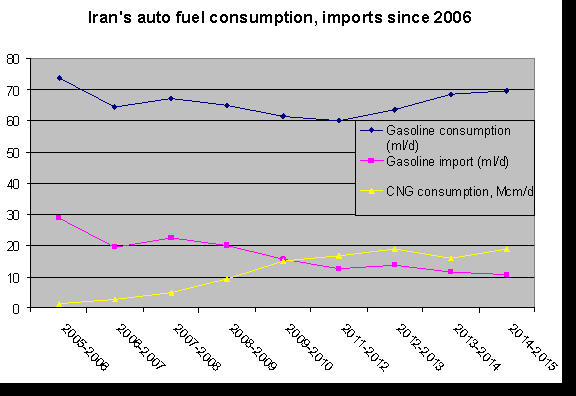Baku, Azerbaijan, August 25
By Dalga Khatinoglu – Trend:
The Iranian parliament passed a bill which ended the gasoline rationing plan - the legacy of former President Mahmoud Ahmadinejad since 2007.
The fuel cards were charged every month as much as 60 liters and every auto owner could consume this amount at 10,000 rials per liter (about $0.29/liter). For extra consumption, citizens could purchase the non-rationed gasoline at 15,000 rials, or $0.43/liter.
Iranian government has increased the fuel price by 10 times gradually since 2007, providing both rationed and unlimited gasoline.
Iran is one of the world's major crude oil exporters, but the country is traditionally is a gasoline importer due to huge amount of fuel consumption in the country.
Iranians consumes about 72 million liters per day (ml/d) of gasoline, of which 12 ml/d is imported.

* Based on official statistics. Iran's fiscal year starts on March 21
During the last ten years, besides rationing gasoline, Iranian government also soared the distribution of compressed natural gas to 20 million cubic meters per day (equals to 20 ml/d of gasoline) to curb the growth of gasoline consumption, but it has increased from 64.5 ml/d in 2007 to the current 72 ml/d.
Subsidized fuel charged the government about $80 billion in 2013 when the oil price was above $100/barrel, while Iran's crude oil export revenues stood at about $62 billion.
Currently, the oil prices are less than a half of what they were in 2013 and according to the International Monetary Fund, it is a good time and chance for governments to eliminate the subsidized fuel and liberalize the fuel prices.
Dalga Khatinoglu is the head of Trend Agency's Iran news service, follow him on Twitter: @dalgakhatinoglu





